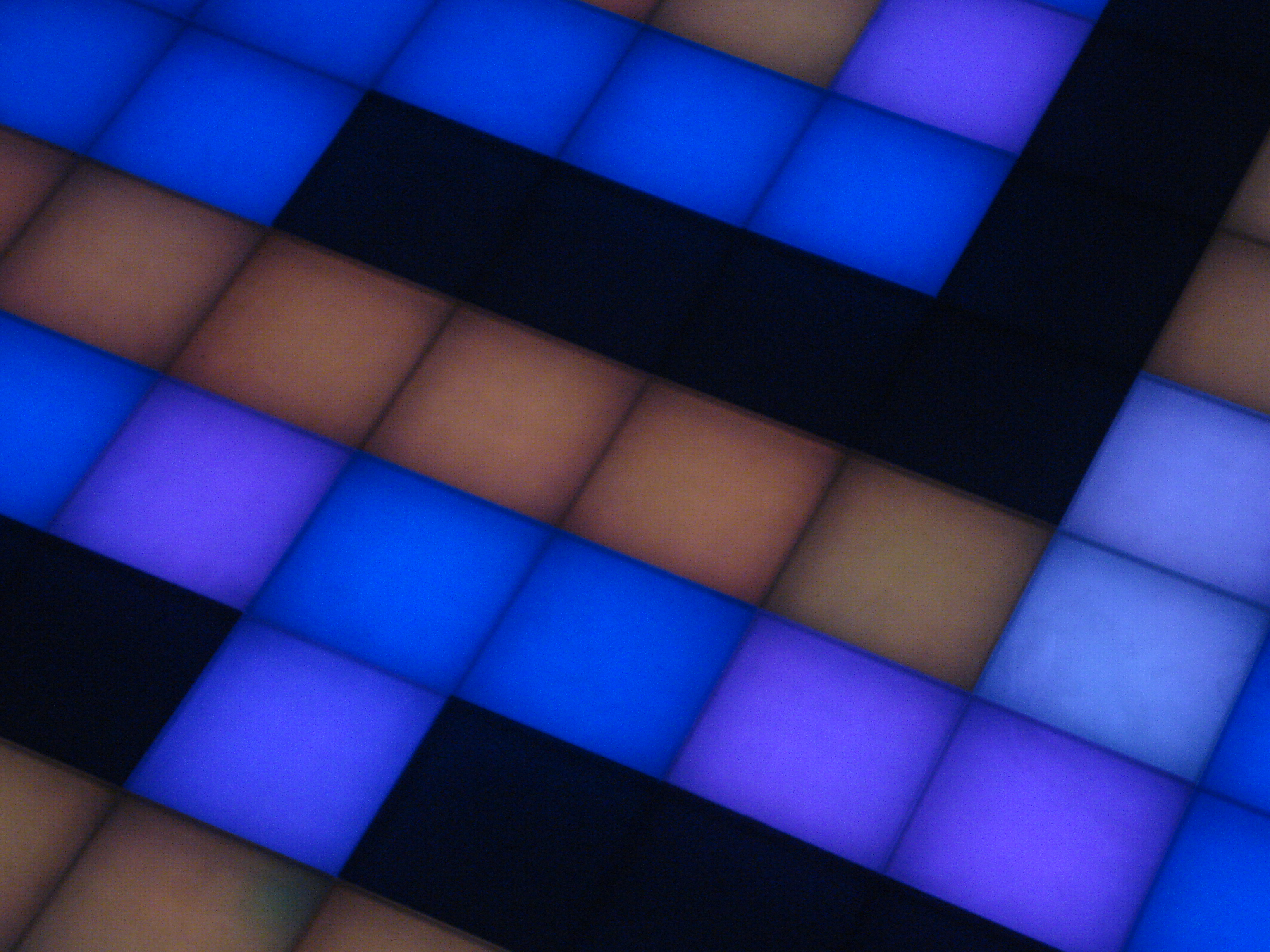Peter Uklański (born 1968 in Warsaw ) - Polish artist, director and photographer, lives in the USA .
http://pl.wikipedia.org/wiki/Piotr_Ukla%C5%84ski
Since the mid-1990s, through his diverse body of photography, installation, painting, sculpture, and film, Uklański has toyed with viewers' expectations, embracing spectacle and cliché and at times playfully reenvisioning the tropes of modernist art. Untitled (Dance Floor) (1996), one of Uklański's best known works, revamps the austere Minimalist grid as a sound-activated, brightly colored floor, a site for communal enjoyment and release.
http://www.guggenheim.org/new-york/collections/collection-online/artists/bios/7585

In a marketing culture you can always get what you want. Or, at the very least, you can always get what the market supposes you want. Is there a difference? How do we know? Knowing better but doing anyway doesn’t prevent us from distinguishing between the given and the true, but it does reward the absence of such distinctions. For its part, art has always retained at least the possibility of delivering the naked truth from the hand-me-downs of cynicism. It can’t do this from a distance. Decoding the lip service of the cynic requires artists to know the language of cynicism better than the cynic.
One artist who has directly pursued the connection between art, market culture and cynicism is Polish-born, New York-based Piotr Uklanski. He is perhaps best-known for two works that could not seem more different from each other: his flickering-light dance floor installations (art can make you feel good and dance), and his appropriated stills of Hollywood actors dressed in military uniforms, The Nazis (1998) (art can expose things we’d rather not remember). The disco experience and the loaded Nazi representations are presented almost as readymades - social readymades - by Uklanski.
Uklanski’s images have been called flat, pop, superficial and sentimental. Depending on the viewer, they can seem naively transparent one moment, exploitative the next.
Bennett Simpson
http://www.frieze.com/issue/review/piotr_uklanski1/
DAVID EVERITT HOWE: Based on your work on pieces like Untitled (Dance Floor), which was included in the Walker's group exhibition "Let's Entertain," you were for a time grouped with relational aesthetics, which was meant to create very open social situations. I think your dance floor was located in the museum's coat-check room. Why there?
UKLANSKI: The coat-check was self-service, so I suppose the gesture of installing it there was a bit more democratic. When originally installed at Gavin Brown's Enterprise in New York, it took up the floor space of the entire gallery, including the office. The whole thing was a fully functioning dance floor. From then on, I wanted to create situations where the visitor was confronted more frontally, even aggressively, with the work. Because the dance floor had a loud music track, many visitors felt put on the spot or awkward, and they tried to avoid it. So I would install the dance floor in spaces that could not be avoided: entrances, lobbies, coat checks. It worked well, particularly when it was installed at MoMA, where it covered the ground of the whole outdoor sculpture garden. The more uptight the original environment, the better it functioned.
HOWE: It's a much less aggressive approach, than, say, Adrian Piper's Funk Lessons. But was it still your intention to dismantle social hierarchies?
UKLANSKI: You're right about breaking down social hierarchies. Felix Gonzalez-Torres's work was a reference.
HOWE: How so? Are you referring to the beefy go-go dancer in the silver lamé bathing suit in Toress's Untitled (Go-Go Dancing Platform) (1991)? That piece is both sexy and absurd in the way it politicizes, or queers, minimalist concerns with objecthood, phenomenology, and spectatorship. The dancer becomes the minimalist object, as if it literally came alive, and it really becomes about the viewer encountering that object in a space, and a sort of kinky subject/object relation. And as the dancer is only there five minutes every day, it also plays on the idea of contingency in time and place, as the experience really depends on chance, and when you show up. Without appropriating a specifically gay idiom, perhaps there's a shared interest in "vernacular" culture.
UKLANSKI: Yes, exactly.
HOWE: You should consider installing a disco at Gagosian [laughs]. There is a range of social hierarchies there that could use some breaking down.
UKLANSKI: Gagosian is a difficult context for artists, because on one hand anything goes, but consequently even "edgy" work will lose its edge. It's a much more codified space than many other commercial galleries. The public and critics bring prejudices—it's something I'm highly aware of while showing there.
http://www.artinamericamagazine.com/news-features/news/piotr-uklanski-discharge/
Piotr Uklański's dance floor @guggenheim from mina k on Vimeo.




No comments:
Post a Comment